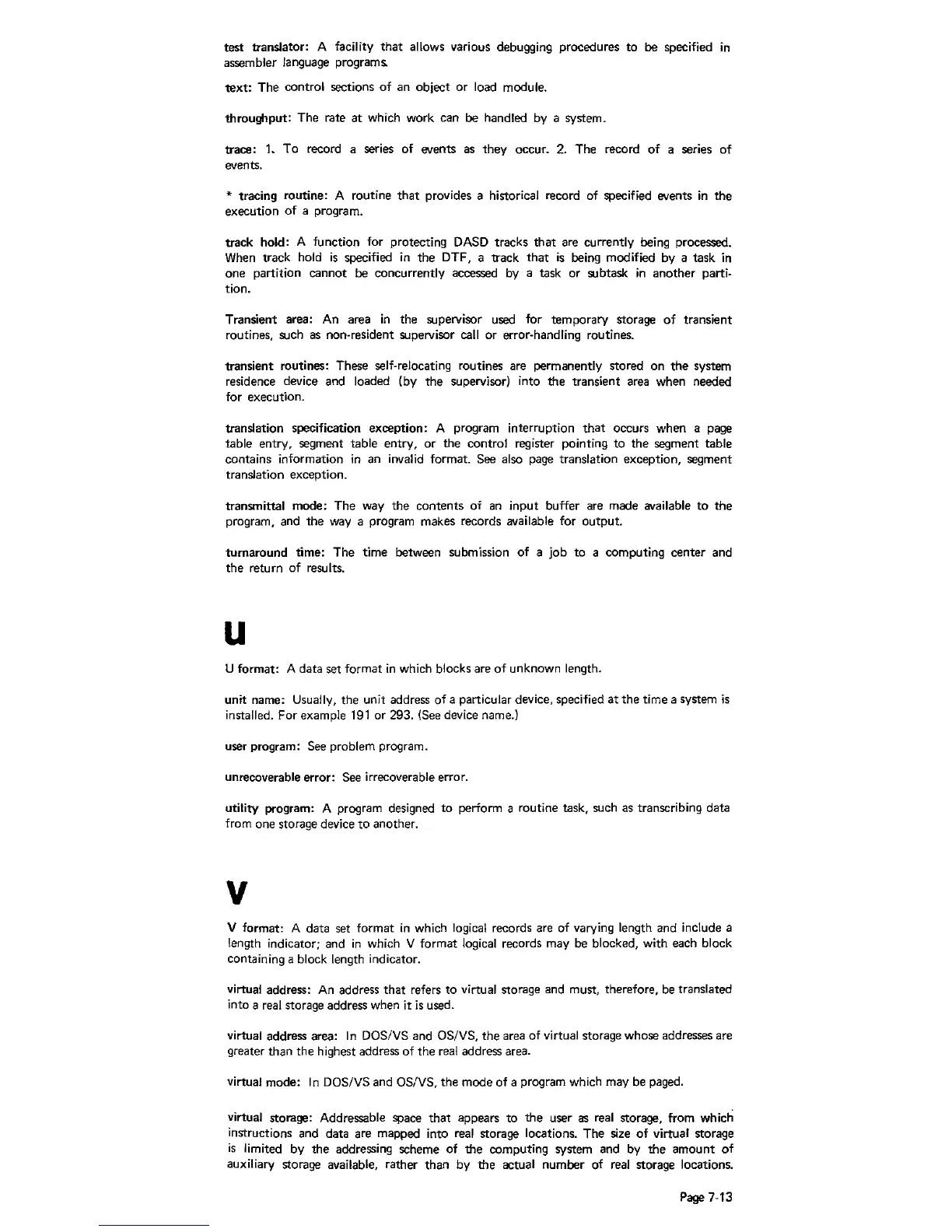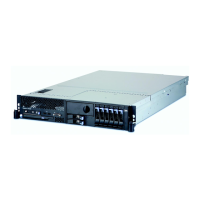test translator: A facility
that
allows various debugging procedures to be specified
in
assembler language programs.
text:
The control sections
of
an object or load module.
throughput: The rate
at
which work can be handled by a system.
trace:
1.
To record a series of events
as
they occur.
2.
The record
of
a series
of
events .
• tracing routine: A routine that provides a historical record of specified events
in
the
execution
of
a program.
track
hold: A function for protecting
DASD
tracks that are currently being processed.
When
track hold
is
specified in the DTF, a track
that
is
being modified by a task
in
one partition cannot be concurrently accessed
by
a task or subtask
in
another parti·
tion.
Transient area:
An
area
in
the supervisor used for temporary storage
of
transient
routines, such
as
non· resident supervisor call or error·handling routines.
transient routines: These
self·relocating routines are permanently stored on the system
residence device and
loaded (by the supervisor) into the transient area when needed
for execution.
translation specification exception: A program interruption
that
occurs when a page
table entry, segment table entry,
or
the control register pointing to the segment table
contains information
in
an invalid format. See also page translation exception, segment
translation exception.
transmittal mode: The way the contents of
an
input buffer are made available
to
the
program, and the way a program makes records
available for output.
turnaround time: The time between submission of a job
to
a computing center and
the return
of
results.
u
U format: A data set format
in
which blocks are
of
unknown length.
unit name: Usually, the unit address of a particular device, specified
at
the time a system
is
installed. For example
191
or 293. (See device name.)
user program:
See problem program.
unrecoverable error:
See
irrecoverable error.
utility program: A program designed
to
perform a routine task, such as transcribing data
from one storage device
to
another.
v
V format: A data set format
in
which logical records are of varying length and include a
length indicator; and
in
which V format logical records may be blocked, with each block
containing a block length indicator.
virtual address:
An
address that refers
to
virtual storage and must, therefore, be translated
into a
real
storage address when it
is
used.
virtual address area:
In
DOSiVS and OSiVS, the area of virtual storage whose addresses are
greater than the highest address of the
real
address area.
virtual mode:
In
DOSiVS and OSIVS, the mode of a program which may be paged.
virtual storage: Addressable space that appears
to
the user
as
real
storage, from which
instructions and data are mapped into
real
storage locations. The size
of
virtual storage
is
limited by the addressing scheme of the computing system and
by
the amount
of
auxiliary storage available, rather than by the actual number of
real
storage locations.
Page
7·13

